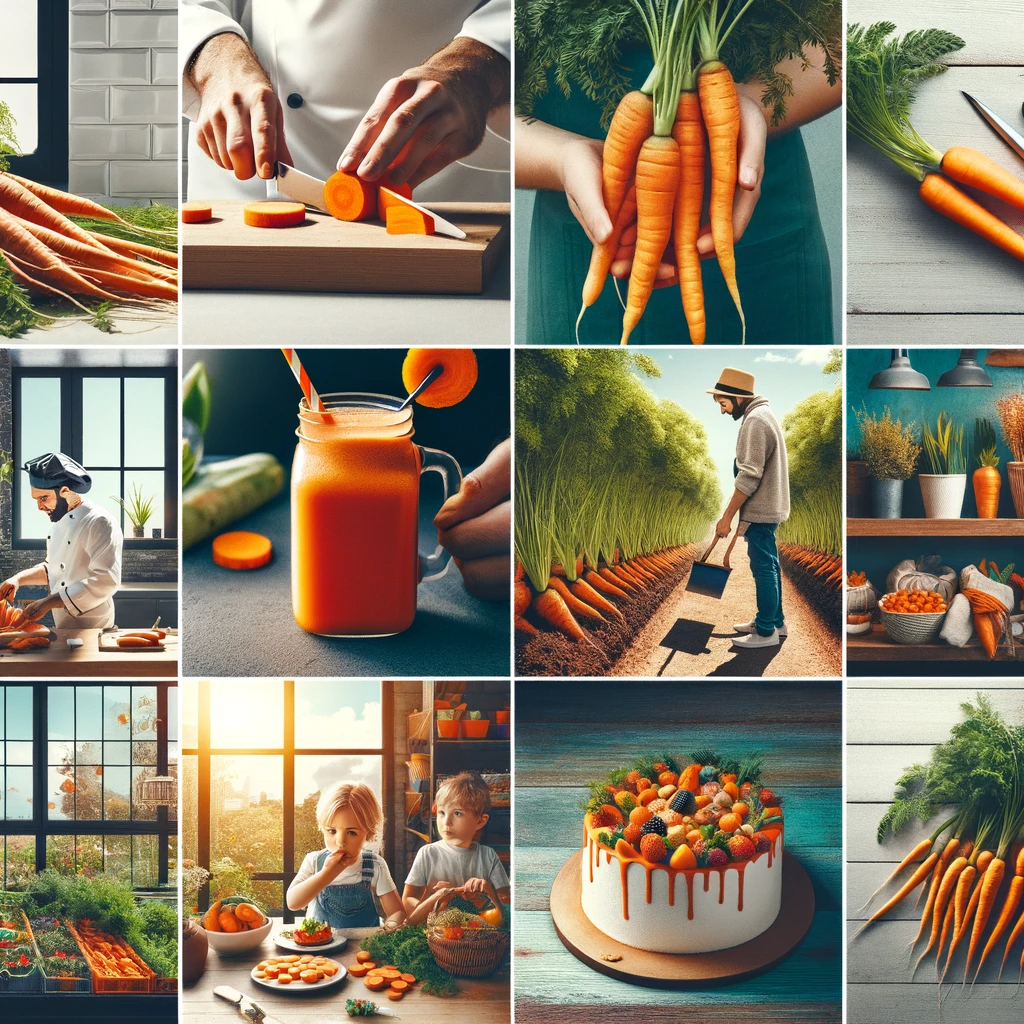In the world of culinary experimentation and flavor-packed delights, pickling is a time-honored tradition that has stood the test of time. Among the plethora of vegetables that can be preserved and transformed into tangy, crispy, and utterly delicious pickles, carrots are a standout choice. In this article, we delve into the art of pickling with carrots as our star ingredient. From the basics of pickling to innovative recipes and health benefits, we’ll cover it all. So, let’s embark on a journey to explore the wonderful world of fermented carrot delights.
Why Choose Carrots for Pickling?
1. Versatility and Flavor Carrots are celebrated for their mild, slightly sweet flavor, making them an ideal canvas for various pickling flavors and spices. Their natural sweetness complements the tangy, briny notes of the pickling liquid, resulting in a harmonious balance of flavors.
2. Crisp Texture Carrots retain their crispness even after pickling, adding a satisfying crunch to your pickled creations. This crunchy texture is a delightful contrast to the softness of other vegetables in the mix.
3. Nutritional Value Rich in vitamins, fiber, and antioxidants, carrots bring a healthy element to your pickled snacks. They are an excellent source of vitamin A, which is essential for good vision and overall health.
The Basics of Carrot Pickling
1. Ingredients
- Fresh carrots (preferably organic)
- Pickling spices (such as dill, mustard seeds, coriander, and garlic)
- Vinegar (white or apple cider vinegar)
- Water
- Salt
- Optional sweeteners (sugar, honey, or maple syrup)
2. Preparation
- Wash and peel the carrots, then cut them into your desired shape (spears, rounds, or sticks).
- Sterilize glass jars by boiling them or using the dishwasher to ensure a clean environment for your pickles.
3. Brine Preparation
- In a saucepan, combine water, vinegar, salt, and optional sweeteners. Bring to a boil and let it cool slightly.
4. Packing the Jars
- Place the pickling spices and garlic at the bottom of the sterilized jars.
- Pack the carrots tightly into the jars, leaving a little space at the top.
5. Pouring the Brine
- Pour the cooled brine over the carrots, ensuring they are fully submerged.
6. Sealing and Storing
- Seal the jars tightly and store them in a cool, dark place for several days to weeks, allowing the fermentation process to work its magic.
Creative Carrot Pickling Recipes
1. Classic Dill Pickled Carrots
- Carrots spears
- Fresh dill
- Garlic cloves
- Mustard seeds
- Peppercorns
- Brine (vinegar, water, salt)
2. Spicy Sriracha Carrot Pickles
- Carrot sticks
- Sriracha sauce
- Red pepper flakes
- Rice vinegar
- Sugar
- Garlic cloves
3. Honey Glazed Carrot Pickles
- Carrot rounds
- Honey
- Apple cider vinegar
- Cinnamon sticks
- Cloves
- Star anise
4. Turmeric and Ginger Carrot Pickles
- Carrot sticks
- Fresh ginger slices
- Turmeric powder
- Black peppercorns
- Apple cider vinegar
- Sugar
Health Benefits of Pickled Carrots
1. Probiotics
- Fermented carrots are rich in beneficial probiotics that support gut health and digestion.
2. Antioxidants
- The fermentation process enhances the antioxidant content of carrots, providing protection against free radicals.
3. Vitamin K
- Pickled carrots are a good source of vitamin K, essential for blood clotting and bone health.
4. Low in Calories
- Pickled carrots make for a low-calorie snack or condiment, perfect for those watching their calorie intake.
5. Aids in Hydration
- The brine in pickled carrots can help with hydration due to its water content.
Conclusion
Carrots, with their versatility, crispness, and nutritional value, are a fantastic choice for pickling enthusiasts. Whether you prefer classic dill pickles or want to experiment with bold flavors, pickled carrots can be a delightful addition to your culinary repertoire. Enjoy the tangy, crunchy goodness of fermented carrot delights and savor the health benefits they bring to your plate. So, roll up your sleeves, grab some carrots, and start pickling your way to culinary excellence!
